Wondering if the food in front of you is something you eat with your hands? Here's what the experts have to say.
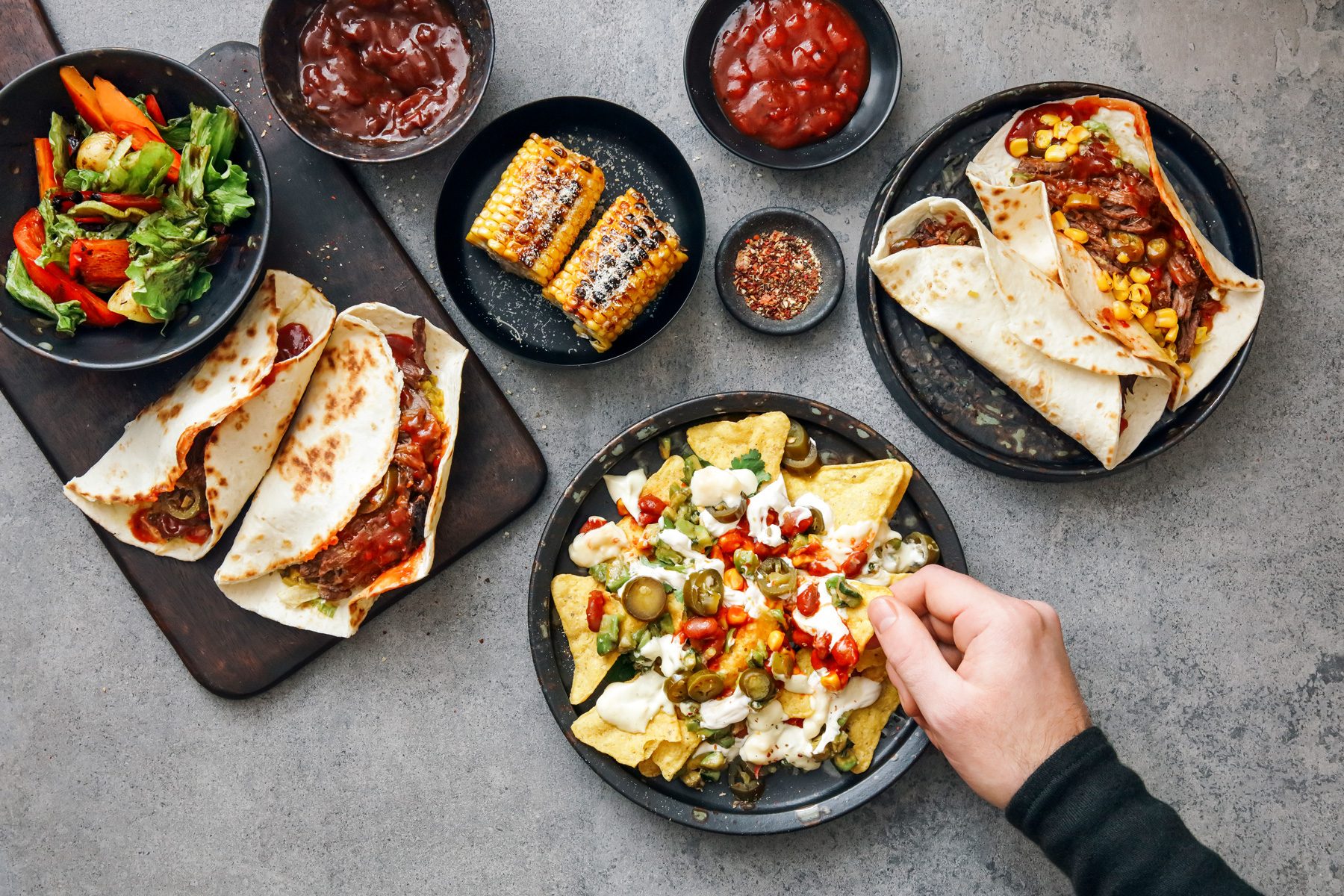
12 Things It’s OK to Eat with Your Hands

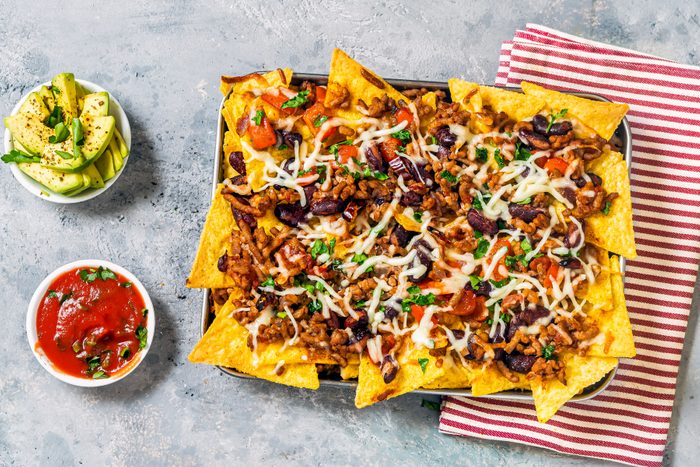
Nachos
“Nachos are normally served at casual places such as restaurants and bars, concession stands and food trucks, but this does not give you license to throw your manners out the window,” says Grotts. If the nachos are overflowing with toppings, using a fork to help lift them off the plate can help minimize the mess. It’s also important to keep at least one napkin at the ready to keep your hands clean, and dab off any nacho cheese or guac around your mouth.
“Try to choose chips that are easy to pick up without disturbing the rest, advises Grotts. “Don’t take the chips buried deep under the toppings, and be mindful not to scoop up all the toppings in one bite. And if there’s a communal dip or salsa, only dip your chip once.”
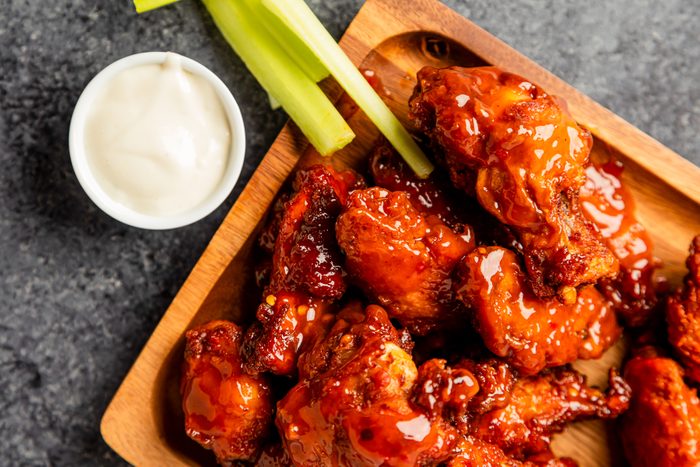
Chicken wings
In sit-down settings, chicken breasts, thighs and legs should always be eaten with a knife and fork. The wings, however, are something you eat with your hands. “Using utensils would make it difficult to eat the meat off the bone,” says Grotts. Just be sure to wash your hands before and after eating.

Cheese
Small, bite-size pieces of hard cheeses like cheddar can be popped into your mouth by hand. If the cheeses are being served on a shared plate with a shared knife, use that knife to cut the morsels, never your own. Cheese on crackers can also be eaten with your hands.
Gottsman points out that while it’s OK to eat cheese with your hands, it’s not OK to use them to serve yourself. “When it’s served on a tray, use a utensil to remove the cheese from the universal tray or bowl and place it on your small appetizer plate.”
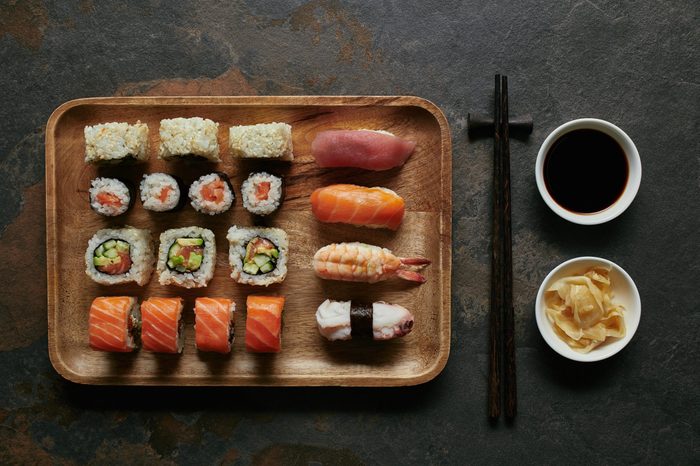
Sushi
Chopsticks are the go-to for most diners when enjoying this traditional Japanese food. But most sushi is actually meant to be eaten with your hands. Nigiri (a bit of packed rice topped with sushi) and maki (the sliced-up rolls filled with rice, fish, and vegetables) should be eaten with fingers, since pinching them with chopsticks can make the rice fall out or crumble. Only sashimi, which are pieces of fish unaccompanied by rice, should be eaten using chopsticks.
“I believe that Western dinners have the idea of sushi and nigiri being fine dining, which they can be,” says Vargas. “But historically, nigiri started as a sort of ‘fast food’ in 19th century in Japan. Next time you are in a sushi restaurant, don’t be afraid of using your hands and enjoying your sushi and nigiri!
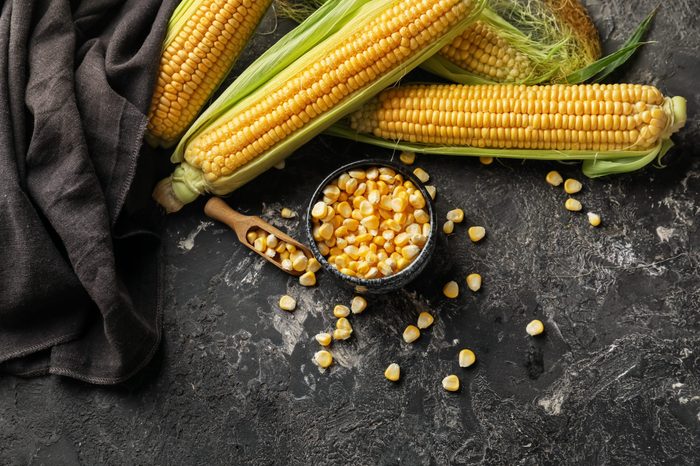
Corn
A summer barbecue favorite, corn on the cob should be eaten with the hands in almost every instance. According to the Emily Post Institute, using a knife to neatly rub a pat of butter on a few rows of the corn cob is fine. But after that, put down your knife! Go slowly, take measured bites, wipe your face of stray kernels and butter drips, and fully enjoy your corn the way it’s meant to be eaten.
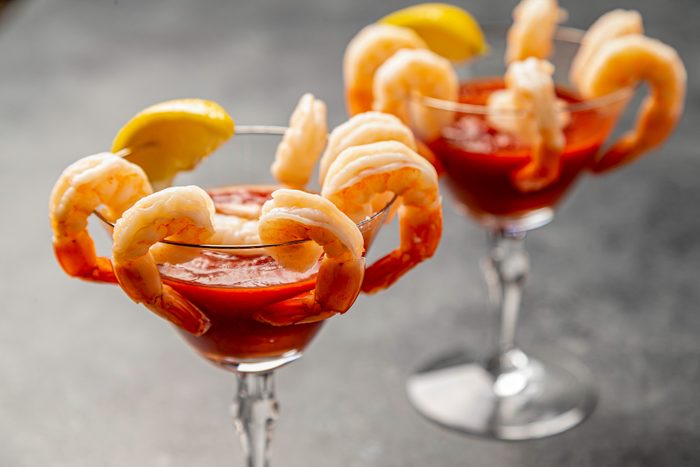
Shrimp cocktail
Most dishes at formal restaurants are knife-and-fork affairs, but shrimp cocktail, a steakhouse favorite, is something you eat with your hands. “Shrimp cocktail is usually served with a tail, which provides a convenient handle for eating,” says Grotts. “Using fingers allows you to dip the shrimp into the cocktail sauce without making a mess.” Once you’ve eaten your shrimp, put the tail back into the serving glass or on the side of your plate to be discarded.
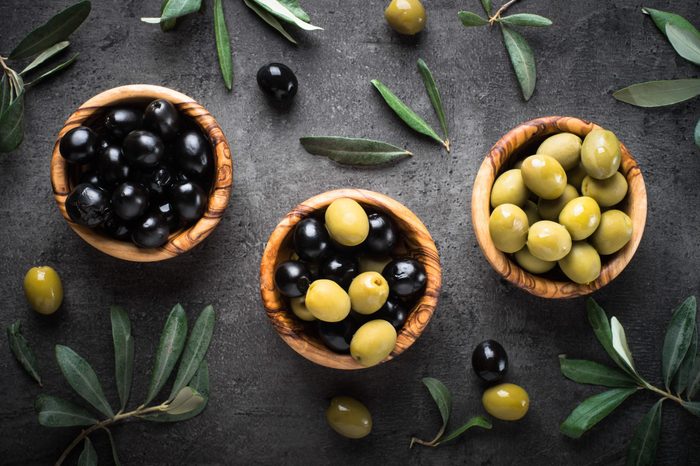
Olives
If the olives are in your pasta, salad, or other food, eat them with a fork. But when you’re eating individual olives, like from a cheese plate or hors d’oeuvres bowl, it’s polite to use your fingers. “At a bar, served with a tray of nuts, or a cocktail party, pick up the entire olive with the little pick you are offered, and put the entire olive in your mouth and chew it,” says Gottsman. “If it has a pit, take the pit out with your index finger and thumb with your left hand and gently cover your mouth with your right hand.”
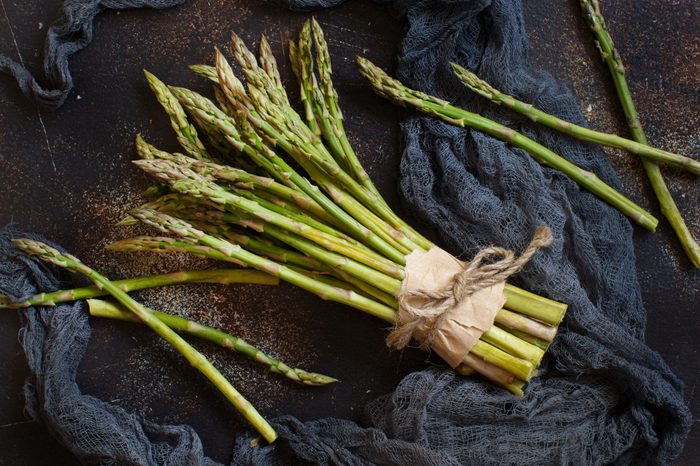
Asparagus
If the long, green spears are crisp and unsauced, it’s 100 percent fine to pick them up with your hands, says Grotts. “When served whole, asparagus can be eaten with your fingers. It was historically served as a finger food during formal meals, especially when lightly cooked or blanched.” But if the stalks are droopy or dripping in sauce or butter, it’s much more couth to use a fork and knife.
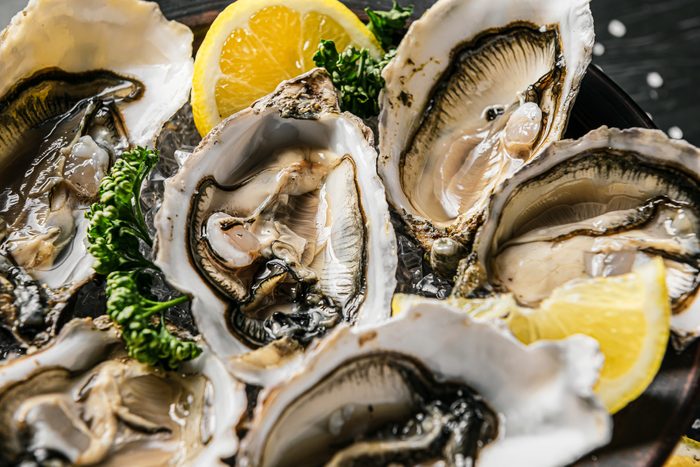
Oysters
Your oysters on the half shell may be served with a tiny fork, but that doesn’t mean they’re not a food you can eat with your hands. “Oysters are considered finger food,” says Gottsman. “The shell is the tool used to convey it to your mouth. The small fork is meant to loosen the oyster from the shell and then brought to your mouth.”
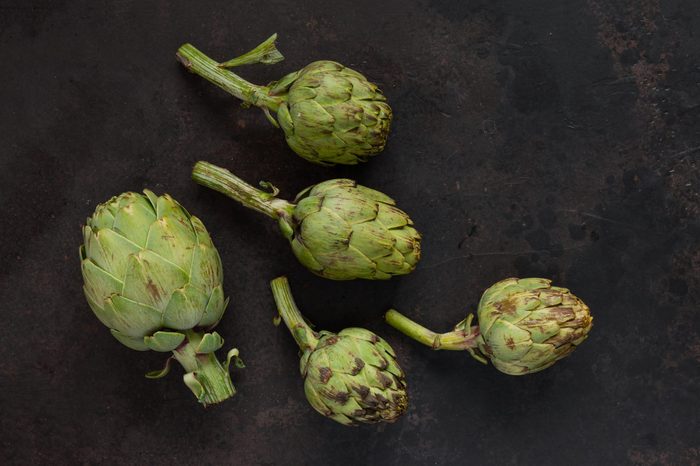
Artichokes
Artichoke hearts chopped into pasta or served pickled on salads should be speared with a fork. But whole, steamed or stuffed artichokes are an entirely different matter. “The leaves of an artichoke are typically pulled off one by one and dipped in sauce or butter,” says Grotts. “Because you eat the tender part by pulling it through your teeth, using your fingers is the most practical method.”
To eat an artichoke, pull off leaves one by one from the outside in, dip the base of each leaf in sauce, and scrape off the edible part of the vegetable by putting it between your teeth and pulling forward. The discarded leaves should then be placed on your plate or a separate one if the host has provided one. Then, once you’ve eaten all the leaves, it’s time to pull out a fork and knife to cut up the heart and eat it.
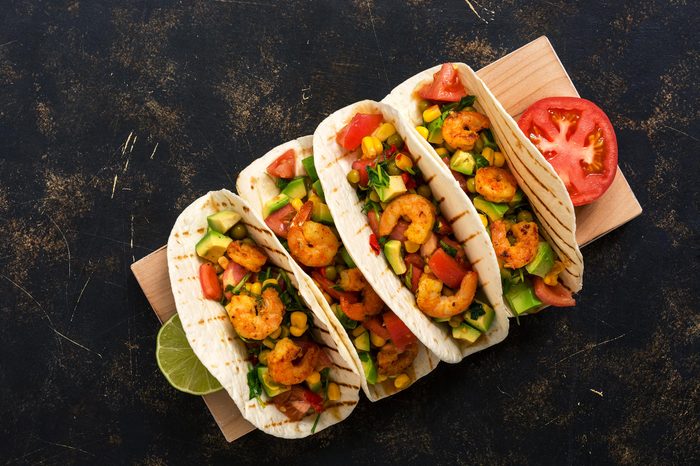
Tacos
Tacos are one of the most popular foods you eat with your hands, but they’re also one of the messiest. “If your taco has fallen apart, use your fork to lift the taco ingredients to your mouth,” says Gottsman. “You can eat the soggy tortilla the same way, with a knife and fork.” If you’re on a date or at an important business lunch, you’ll want to avoid these foods that can be a social minefield.
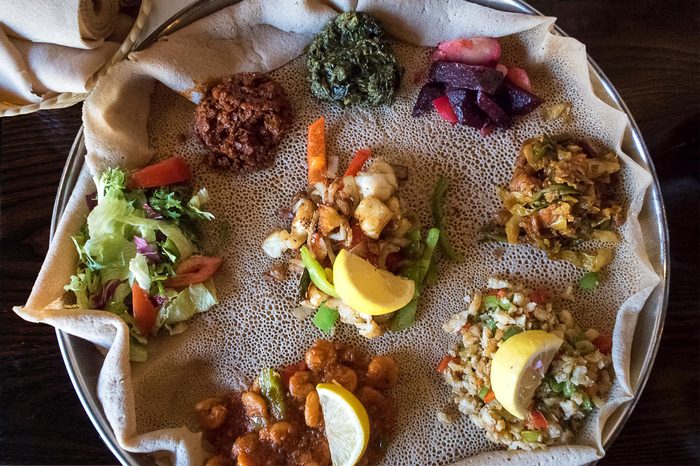
Ethiopian food
When sitting down to feast at an Ethiopian restaurant, you might be surprised by the total absence of cutlery. Instead of forks and spoons, Ethiopian cuisine relies on injera, a large, crepe-like flatbread served underneath heaps of meat and other entrees. Diners are encouraged to tear off a piece of injera and use it to scoop up other foods on the platter. Don’t be afraid to get your hands dirty in the process, say the restaurateurs behind Tadu Ethiopian Kitchen in San Francisco—it’s totally acceptable!
About the experts
|
Why trust us
Reader’s Digest has published hundreds of etiquette stories that help readers navigate communication in a changing world. We regularly cover topics such as the best messages to send for any occasion, polite habits that aren’t as polite as they seem, email and texting etiquette, business etiquette, tipping etiquette, travel etiquette and more. We’re committed to producing high-quality content by writers with expertise and experience in their field in consultation with relevant, qualified experts. We rely on reputable primary sources, including government and professional organizations and academic institutions as well as our writers’ personal experience where appropriate. For this piece, Allison Robicelli tapped her longtime experience as a food writer, cookbook author and chef. We verify all facts and data, back them with credible sourcing and revisit them over time to ensure they remain accurate and up to date. Read more about our team, our contributors and our editorial policies.
Sources
- Lisa Grotts, etiquette expert, author, and public speaker, Aug. 15, 2024
- Diego Campos Vargas, executive chef of CAMP Modern American Eatery in SC, Aug. 11, 2024
- Diane Gottsman, etiquette expert, author, speaker, popular media resource and owner of The Protocol School of Texas, Aug. 13, 2024
- David McIntyre, co-founder of The Mash House, the Stave Cocktail Lounge, and the West Fork Whiskey distillery in Ind., email interview, Aug. 13, 2024
- Emily Post Institute: “How to Eat Corn on the Cob”




















